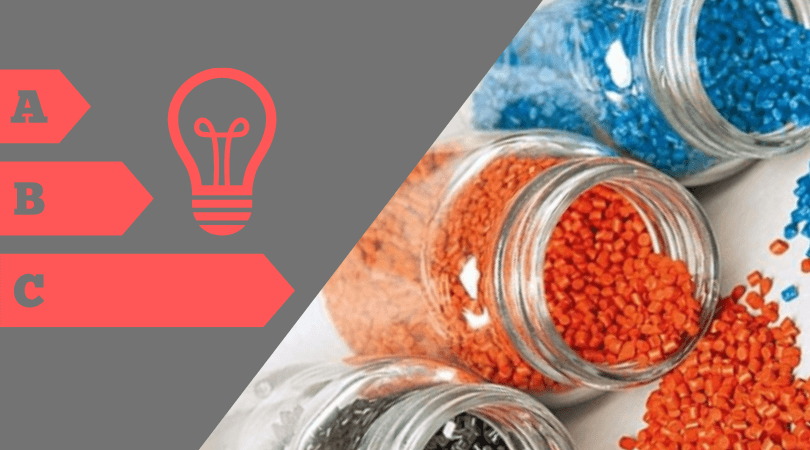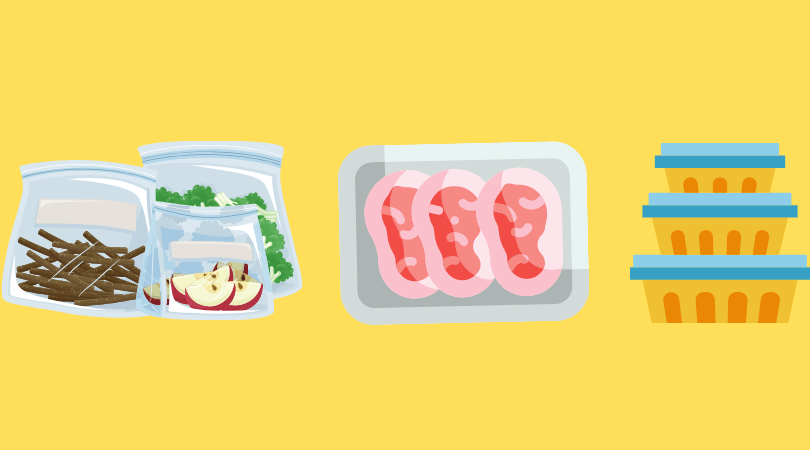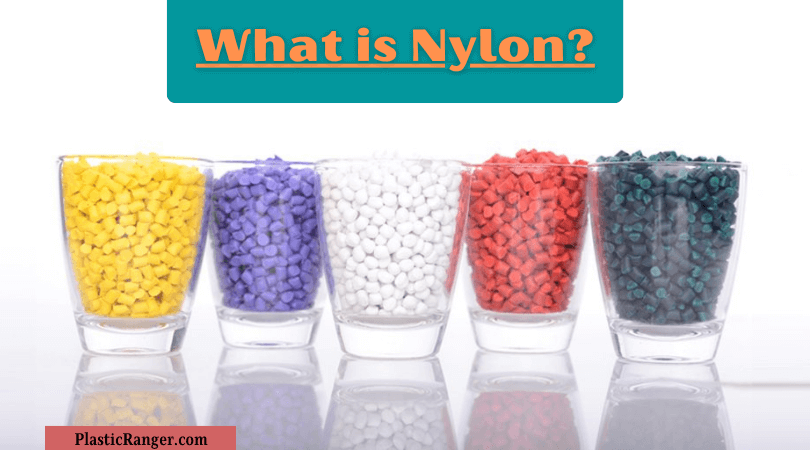What is Nylon?
Nylon is a linear thermoplastic, also known as Polyamide. It is a strong, high-performance, engineering plastic with excellent tensile strength, often seen as an alternative to silk, rubber, and latex. It is a commonly used thermoplastic material for various applications like clothing, rubber components like tires, ropes, threads, automobile parts, mechanical components, etc.
Polyamide or Nylon was first developed and tested in 1935 by Wallace Carothers, the American chemist. Wallace produced technically Nylon 66, which is still the most commonly used variant.
It is solid, abrasion, chemical, moisture absorbent, elastic, and long-lasting. Nylon material is often used as an alternative to low-strength metals for its lightweight compared to metals, chemical suitability, good mechanical and barrier properties, high melting point, and high-temperature resilience.
Additionally, nylon can easily be flame retarded, which is quite rare to be found in thermoplastics.
Different Types of Nylon

Nylon is available in white, black, and off-white colors. There are multiple types of nylon in the more prominent polyamide family, and each one is utilized depending on the application and the budget restrictions.
It is also referred to by its chemical name – PA (e.g., PA6, PA66 )
“6” means that the material is conceived with a single monomer in combination with itself. In comparison, “66” shows that the material is developed from multiple monomers combined with itself ( also called comonomers ).
- The two most commonly known and used Nylon types are PA66 ( Nylon 66 ) and PA6 ( Nylon 6 ). They are often extruded to be used in the textile and packaging industries.
- The two most rigid and high-performance-based nylon variants are PPA and PA46, considered great options for replacing metals. They are used for products constantly exposed to extreme conditions and particular high-end applications.
- There are many Bio-based variants; for example – PA11 is extracted using castor oil chemistry.
The amide chemical group in all the nylon variants is responsible for moisture absorption. Moisture reduces nylons’ tensile modulus, increasing smack resistance and flexibility.
Moisture absorption is also a key to understanding dimensional variations. Knowing that will come in handy while designing parts.
How is Nylon Made?
The production of plastics, including nylon, involves a multi-faceted chemical engineering process that starts with the distillation of hydrocarbon fuels. These fuels are separated into lighter components known as fractions via fractional distillation. Some of these fractions are further isolated and chemically modified using catalysts to yield a variety of plastics.
The plastic material usually forms through one of two processes: polymerization or polycondensation, which involve long-chain molecular structures. Nylon’s synthesis stands out for its versatility and employs two distinctive methods.
The first method is condensation polymerization, which utilizes monomer amine groups (NH2) and carboxylic acid groups (COOH). These react together to form amide bonds, including the nylon polymer chain.
The second method is essentially an extended version of the first. Still, it employs molecules with multiple functional groups—specifically, diamine, which contains two NH2 groups, and dicarboxylic acid, featuring two COOH groups.
The reaction between these multi-functional groups yields a more complex structure, allowing for variations in nylon types. Both methods are highly controlled, ensuring that the resultant polymers meet specific industrial standards for durability, flexibility, and other material properties.
Understanding these processes enables targeted modifications, paving the way for custom-designed materials that can meet many application-specific requirements.
Whether in the textile industry or advanced engineering applications, the intricate chemistry of nylon production is central to its utility and adaptability.
Differentiation: PA6 and PA66
| PA6 | PA66 |
| It is manufactured and synthesized using ring-opening polymerization of caprolactam. | On the other hand, Nylon 66 is manufactured and synthesized by polycondensation of hexamethylenediamine and adipic acid. |
| It is extensively used in the packaging and textile industries. | It is widely recognized as an engineering thermoplastic and utilized as a lightweight replacement for metals. |
| Melting Point – 223°C | The melting point – is 255°C. |
| Less moisture absorption ability compared to Nylon 66 | High Moisture absorption ability and better short-term heat resistance |
| Lower modulus | Higher Modulus and better wear resistance |
Key Properties of PA6 and PA66

- Exceptional resistance to fuels and oils: Showcases a notable ability to withstand degradation when exposed to petroleum-based substances.
- Superior electrical insulation capabilities: Offers an outstanding ability to resist the flow of electrical current, making it ideal for electrical applications.
- Limited dimensional stability: While robust in other areas, it lacks in maintaining its form and dimensions under varying conditions.
- High-impact toughness even at sub-zero temperatures: Demonstrates a remarkable ability to absorb and distribute impact energy, retaining its structural integrity in cold environments.
- Mandatory pre-processing dyeing: Requires careful dye application to ensure colorfastness and uniform appearance throughout the material.
- Satisfactory resistance to fatigue: Exhibits a moderate ability to withstand repetitive loads or cycles without showing signs of degradation.
- Notable vulnerabilities to mineral acids and polar solvents: While strong in other respects, it shows a specific weakness when exposed to acidic or polar chemical agents.
- Maintains high tensile strength and rigidity at elevated temperatures: Displays excellent mechanical properties, sustaining its strength and stiffness even when subjected to higher thermal conditions.
Below are the typical properties of various grades of Nylon:
Property | Units | ASTM Test | Extruded NYLON 6/6 | Cast NYLON 6 | Oil-Filled Cast NYLON 6 |
| Flexural modulus | psi | D790 | 410,000 | 420,000 – 500,000 | 375,000 – 475,000 |
| Tensile Strength | psi | D638 | 12,400 | 10,000 – 13,500 | 9,500 – 11,000 |
| Heat deflection temperature – 264 psi | °F | D648 | 194 | 200 – 400 | 200 – 400 |
| Water absorption (immersion 24 hours) | % | D570 | 1.2 | 0.60 – 1.20 | 0.50 – 0.60 |
| Maximum continuous service temperature in air | °F | – | 210 | 230 | 230 |
| Coefficient of linear thermal expansion | in/in/°Fx10-5 | D696 | 4.5 | 5 | 5 |
| Izod Impact | ft-lbs/in of notch | D256 | 1.2 | 0.7 – 0.9 | 1.4 – 1.8 |
Advantages of Nylon

- Nylon is super lightweight compared to other thermoplastic materials. The weight is almost 1/7 of the materials.
- Both grades have high tensile and compressive strength.
- Excellent wear resistance and abrasion.
- Fantastic dust and dirt resistance (Not easy to find in other materials).
- Smooth processing and easy machining.
- Complex designs are achievable.
Engaging Read – What is PEEK Material? | A Simple and Detailed Guide
Disadvantages of Nylon

- Highly flammable. Catches free quickly in an open flame.
- High melting temperature.
- Negative impacts of UV exposure. A UV stabilizer is often added before processing.
Challenges Faced While Molding with Nylon

Like any other thermoplastic, some challenges are often faced while processing Nylon. Let’s discuss them in brief.
- Moisture
- Shrinkage
- Gassing
Moisture
Nylon is one of the most hygroscopic materials, quickly absorbing excess moisture, which can sometimes be a headache. Draining should be done promptly and adequately.
Poor drying can lead to excess gassing and other potential scrap-generating defects.
However, excess moisture is easily avoidable by adequately cleaning the loader line and receptacle.
Shrinkage
Nylon is a bit vulnerable to shrinkage problems during the molding process. Shrinkage can cause reduced strength, discoloration, and warped edges in the final product.
Controlling the heat and molding temperature can reduce shrinkage significantly.
Gassing
Excess gassing can have significant defects in nylon plastic. In addition, a poor pale appearance is common with excess gassing.
High mold temperature and poor venting is the most common reason for gassing.
Gassing prevention is quite simple; finding the right temperature for processing and adding an extra vent in the machine can eradicate gassing.
Applications
PA6 and PA66 are extensively utilized in multiple industries for safety and comfort gear, electronics, sports, leisure, plastic nets, etc.
- Electrical & Electronics
- Food Packaging
- Automotive
- Consumer Products
- Furniture Industry
Electrical and Electronics

Both PA 6 and PA66 grades are qualified enough to be used for electrical and electronic products. If they pass GWIT, and UL94 tests, their application in your products will become easier.
Both grades can easily be flame retarded. That gives it a tremendous advantage to be used in electrical products with miniatures and thin designs required.
Food Packaging

Excellent puncture resistance is one of the main features of PA6 and PA66, along with good barrier resistance to oxygen, carbon dioxide, and other gases.
These properties are a must for food packaging applications. That makes PA6 and PA66 highly suitable for providing safe, secure, and, most importantly, safe compatible human-contact packaging solutions (mono and multilayer ).
Automotive
Good Processability and excellent chemical and temperature resistance make PA6 and PA66 suitable for replacing metal in automobiles (Mostly under the hood parts where design flexibility is very important).
Their significant contribution is towards weight savings which helps in reducing Co2 emissions and improving the safety and comfort of automobiles.
Consumer Products
Polyamide 66 has numerous applications for the consumer goods industry thanks to its mechanical resistance, easy shaping, colorability, and decent surface aspect crucial for consumer goods.
PA66 is easy to use and inexpensive compared to many thermoplastics used for the application. Even shaping the goods in complex designs is doable.
Furniture
Traditionally, polypropylene was the popular thermoplastic for furniture applications (and it still is). However, firms are steadily transitioning to Nylon.
It is actively being utilized for manufacturing home and office furniture, stadium seats, etc.
Brilliant surface finish quality, excellent resistance to dirt, and aging have played a massive role in bringing Pa6 and PA66 into mainstream furniture manufacturing.
The Future of Nylon in the Plastics Industry
According to studies conducted by fortune global insights global Nylon market size is pegged to grow by about USD 30 Billion by 2026.
As the demand for sustainable polymeric products is on a high trajectory, nylon plays an essential role in developing such products.
For example, Osprey, a manufacturer of outdoor products, partnered with Hyosung in August 2020 to utilize its 100% recycled fiber for manufacturing outdoor products. Similarly, a french company named Longchamp is making bags from waste nylon.
However, the demand is hampered significantly in the short term because of the COVID-19 outbreak resulting in economic uncertainty worldwide. Things will take time to come back to normal. Still, in the longer term, Nylon’s irreplaceability in industries like textile and automobiles gives it an edge to stay relevant even in tough times.
FAQs
below are the frequently asked questions on is nylon plastic. Let’s dig deep to know more.
Why is Nylon so strong?
The main fiber composition is a strong synthetic polymer that makes its bonds tight, rigid, and strong.
Does Nylon have an extended structure?
Nylon and silk have very similar structures but have different degradation processes. H-bonds join neighboring chain segments and create an extended planar sheet such that NH groups can form strong hydrogen bonds (H-bonds) with the CO group, which causes a crystal structure of nylon. That means it doesn’t have an extended structure.
Why does Nylon 6 have a high melting point?
The monomer of Nylon 6 is called aminocaproic acid, but it is known as caprolactam in its ring form. When the ring is opened, the chemical will react with itself to produce the Nylon 6 polymer. The amide polymer group is responsible for Nylon’s relatively high melting point and affinity for moisture.
Which is more water-resistant? Nylon or Polyester
Polyester is more water-resistant than Nylon. However, none of them is entirely waterproof, Nylon has a moisture regain the level of 4%, and polyester has a moisture regain the level of 0.4%. Meaning polyester is more hydrophobic than Nylon.
How do you clean Nylon Plastic?
It is quite easy to clean, but it should be done carefully because nylon resists absorbing moisture and dries easily. Handwashing is the easiest and safest way to clean Nylon products. Rinsing with cool water until the water is no longer soapy and doesn’t wring.
Suggested Read
- What is UHMW Plastic Material? | The Definitive Guide
- What is LDPE? | Low-Density Polyethylene | The Complete Guide
- What are the Top 5 High Tensile Strength Plastics?
- What is PBT Plastic | Properties of PBT | PBT Alloys and its Blends | PBT Applications and Future
- What is PET Plastic | PET Characteristics | PET Copolymers | How is PET Made | Advantages & Disadvantages
- What is Condensation Polymerization? | The Definitive Guide
- What is the Glass Transition Temperature of Plastics?
- How is Plastic Made? A Simple and Detailed Explanation.
The Takeaway
Thus, were my thoughts on nylon plastics. I have emphasized that the common grades PA6 and PA66 are highly beneficial for any plastic manufacturing firm.
The exceptional properties of nylon plastic have made it a versatile material widely used in various industries. Its ability to withstand high tensile strength, impact, and abrasion makes it an ideal choice for durable applications. With continuous research and development, new nylon blends with improved properties have been developed, indicating their potential for future use.
Nonetheless, nylon’s vulnerability to moisture and UV light emphasizes the need for appropriate storage and handling to guarantee long-term functionality.
As it’s inexpensive compared to other plastics, it can play a vital role in reducing costs, thereby boosting profits without hurting the production quality.
Kindly share your reviews in the comment box.
Quick Navigation




I couldn’t find a better article on the internet on Nylon. Keep up the good work.
Thank you very much.